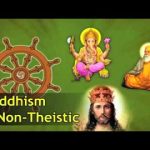The Four Noble Truths: the essence of Buddha’s teaching.
The Four Noble Truths (with transcript) Today (05 May 2012) is the Vesak Day. ‘VESAK’ Day is the Birth, Enlightenment and Death of Budhha. Four Noble Truths are the essence of Buddha’s teaching or the foundation for most Buddhist belief, and they make a good starting off point for trying to understand the religion. Here’s an explanation of the Four Noble Truths. link
The Four Noble Truths (transcript)
The Buddha’s first sermon after his Enlightenment centered on the Four Noble Truths, which are the foundation of Buddhism. The truths are:
1. The truth of suffering (dukkha)
2. The truth of the cause of suffering (samudaya)
3. The truth of the end of suffering (nirhodha)
4. The truth of the path that frees us from suffering (magga)
Recognizing Suffering
The Truth of Suffering: The First Noble Truth often is translated as “Life is suffering.” Many people new to Buddhism tune out as soon as they hear this. But the Pali word “dukkha” also refers to anything that is temporary, conditional, or compounded of other things. Even something precious and enjoyable is dukkha, because it will end. The Truth of the Cause of Suffering: The Second Noble Truth teaches that the cause of suffering is craving or thirst (tanha). We continually search for something outside ourselves to make us happy. But no matter how successful we are, we never remain satisfied. The Buddha taught that this thirst grows from ignorance of the self. We go through life grabbing one thing after another to get a sense of security about ourselves. We attach not only to physical things, but also to ideas and opinions about ourselves and the world around us. Then we grow frustrated when the world doesn’t behave the way we think it should and our lives don’t conform to our expectations.
Ending Suffering
The Truth of the End of Suffering: The Buddha taught that, through diligent practice, we can put an end to craving. Ending the hamster-wheel chase after satisfaction is enlightenment (bodhi, “awakened”). The enlightened being exists in a state called Nirvana. The Truth of the Path That Frees Us From Suffering: Here, the Buddha as physician prescribes the treatment for our illness: The Eightfold Path. Unlike in many other religions, in Buddhism, there is no particular benefit to merely believing in a doctrine. Instead, the emphasis is on living the doctrine and walking the path.
Link text and video
Related:
Buddha – A Documentary About Buddhism . This documentary is made by filmmaker David Grubin and narrated by Richard Gere. It tells the story of the Buddha’s life, a journey especially relevant to our own bewildering times of violent change and spiritual confusion. It features the work of some of the world’s greatest artists and sculptors, who across two millennia, have depicted the Buddha’s life in art rich in beauty and complexity. Hear insights into the ancient narrative by contemporary Buddhists, including Pulitzer Prize winning poet W.S. Merwin and His Holiness the Dalai Lama.
Leave A Reply
You must be logged in to post a comment.









 Paranormal
Paranormal

